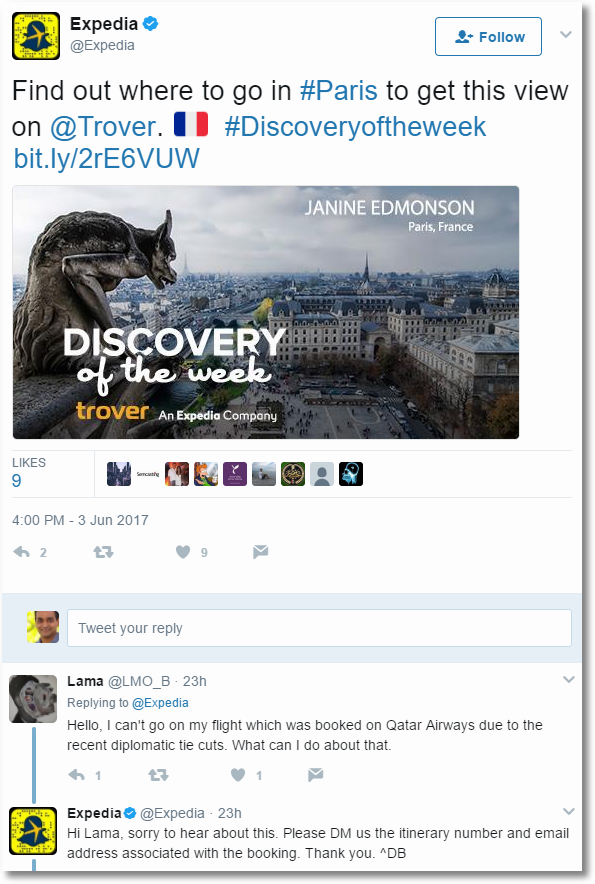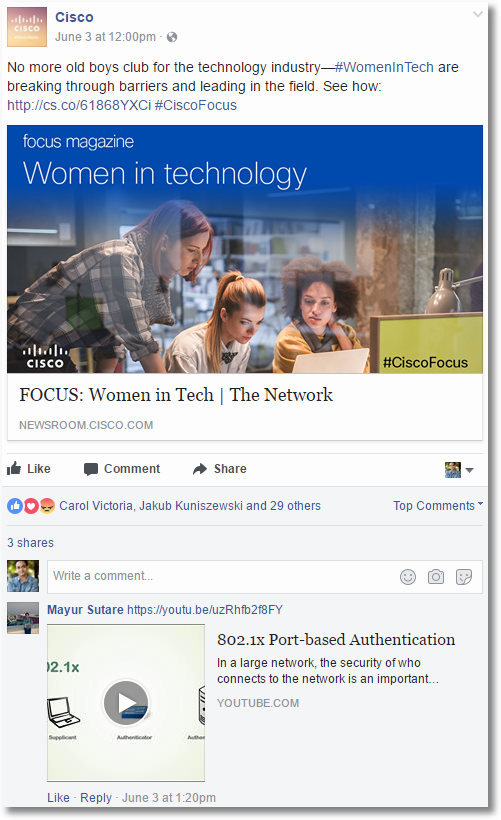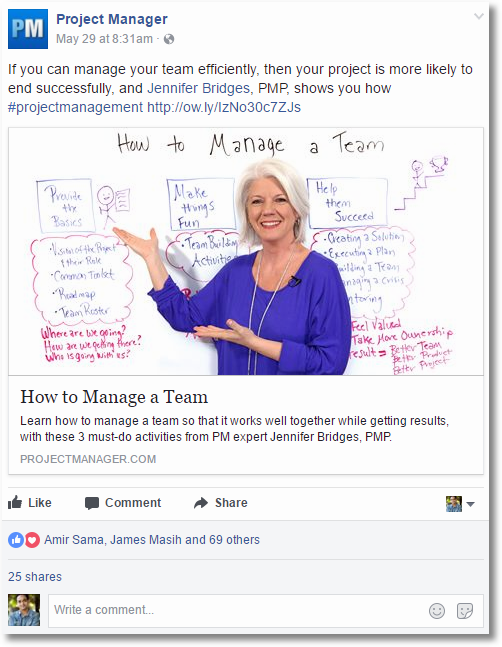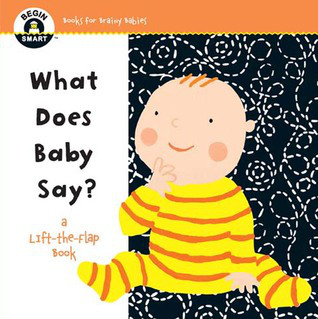How many business, brands, decision makers out there still think of social media as an alternative to the traditional advertising? Think again!
The way of social media marketing is definitely changing, and I couldn’t agree anymore with this Avinash Kaushik – one of the best digital marketing analyst out there, when he talks about why paid social is much more beneficial for the advertiser.
Stop All Social Media Activity (Organic) | Solve For A Profitable RealityLife is short.
It is time to point out an ugly truth, and to be the brave person that you are, the intelligent rational assessor of reality that you are, and kill all the organic social media activity by your company.
All of it.
Seems radical, but let’s take it one step at a time.
To give you a sense of the depth and breadth of ideas I’ll cover today, here are the sections in this post:
+ The Promise of Marketing Utopia.+ The Broken Promise of Marketing Utopia, Implications.
+ The Broken Promise of Marketing Utopia: Examples.
+ Win Big: Stop Posting Content for Organic Reach On Social Channels.
+ Is the Huge Audience on Social Media Platforms Completely Useless?
+ Is the Idea of Marketing Utopia Permanently Dead?
+ Bottom-line.
I urge you to have an open mind. My plan is to challenge your critical thinking skills, and share lessons that will apply broadly across the professional effort you put day in and day out. Most of all, I’m excited to frame an important problem, and present solutions that will transform an important part of your marketing strategy.
Let’s go!
The Promise of Marketing Utopia.
I hate pimping (what marketing has come to be). I adore building meaningful relationships – the kind of long-term connections where a brand truly gives a f about their customers, and gives something of value in exchange for their attention. I LOVE brands that can pull this off, and support them with my un-asked-for evangelism and precious $$$s.
Hence, you can imagine how gosh darn excited I was at the advent of Facebook and Twitter (first real social networks). There were a billion people there, spending a meaningful amount of time on these wonderful platforms. Excitedly, brands could have a presence (a “page”) where they could contribute meaningful updates (info-snacks) in order to be a part of the organic conversations people were already having by the tens of millions.
Daily meaningful brand connections would be converted into brand familiarity, shifts in brand perception, feeding brand loyalty. #orgasmic
If you were a travel company, meaningful would now translate into helping feed wanderlust. The company could contribute info-snacks about where people should go, exposing the coolest places in the world, helping people travel better via tips, pictures, videos… you know… communicating travel love. The one thing a travel company would have in common with travel customers. The most imaginative travel marketers could even extend this opportunity to helping connect the purpose of their existence, selling tickets and hotel rooms, to helping people create moments of happy by crafting day/s of escape from the rough and tumble of life.
Glorious, right? If you work at Expedia or Cathay Pacific, does that not make you want to come to work and, for at least a part of your employment, create meaning? How rare is that!
If you were Cisco, meaningful would mean sharing info-snacks whose entire purpose could be to get Engineers promoted. Share tips, ideas, schematics, usage shortcuts, creative implementations, solutions to top problems that hold Engineers back… you know… understanding your audience deeply and give them something of value in exchange for their attention. The most imaginative B2B marketers could even figure out how to be a part of solving some of the deepest entrenched problems in the industry (STEM education, equal opportunity, + +) and in turn add an entire value-system to their brands.
Amazing, right?
Marketing based on something real, rather than a coupon or company brochure.
The Broken Promise of Marketing Utopia, Implications.
None of the above transpired on Social platforms.
Businesses of all types, including Google (SMB, Main), got on amazing platforms like Facebook (and Weibo, Instagram, Pintrest etc.) and started pimping. All that their collective imagination could manifest in a Utopia-possible environment was: LOOK ME I AM SO PRETTY!! BUY NOW!!!
Stuff that is a turn off.
Consider the Google’s first FB page above, it is a complete disaster with not a single post in the last six months being of even five seconds of value to any small business. That page, or the main one, is not an overt Buy Now, but if you think critically like the tough Marketer I want you to be you’ll have a hard time finding a single post that’s solving for Google’s human customers. Almost every single one is pimping Google (or pimping random research Google has commissioned – to pimp Google!). The non-value is so transparent, yet they post every single day something that basically is solving for Google (although only God knows what that is). If someone bothers to interact with the post, the posted comment is a spam or totally useless. Yet. They keep posting. Polluting utopia.
Google is not unique in not understanding the promise, checkout your company’s FB page.
This strategy by businesses lead to what I now call the Zuck Death Spiral. ZDS.
Real humans on Social platforms quickly got turned off by these low-grade Social contributions/posts by companies. That meant humans (us!) refused to engage with them. This was noticed by Team Zuck, who started to slowly turn down the presence of company posts in User feeds. This lead to less Reach for brands. Which in turn lead to even fewer customer interactions for content posted by brands. Which was duly noted once more by Team Zuck. Which… you know where this is going, tightened the screws on organic Reach even more. And, here we are in a barren desert for brands on FB.
Most brands get less than 1% Reach via their organic contributions on social platforms. And, less than 1% engagement of any kind from that less than 1% reached (identified using the best social media metrics: Conversation Rate, Amplification Rate, Applause Rate).
ZDS is solving for FB, as FB should, and it is an attempt to solve for FB’s users.
So… If all you can do is overtly or covertly pimp… And, pimping is not cheap (that Google page, and your company’s page, has pictures, videos, an agency deployed, internal company employees with a “social media execution checklist”, senior leadership time committed, and more)… And, all it does is get you 1% Reach, max, with almost no engagement… Why do you still have an active (organic) social media effort?
Why is this reality not smacking some sense into your marketing strategy?
The Broken Promise of Marketing Utopia: Examples.
Is it difficult to check if your brand is caught up in the Zuck Death Spiral? No.
Do you have access to any data to measure how deeply non-impactful your organic Social Media efforts are? OMG, yes.
Everything you need, data and information, to do an audit is public.
All you have to do is visit your company’s Facebook page (or Instagram, LinkedIn, Pinterest, etc. presence).
Let me show you what to look for. Let’s start with Expedia. They have 6.4 million Likes as of today. Go look at any post on the page if you are an Expedia employee.
 First thing you’ll look at is the Applause Rate (likes, other emotions, you’ll see it right under the photo). That number is 75. Divide that by 6,462,977 (potential audience size today).
First thing you’ll look at is the Applause Rate (likes, other emotions, you’ll see it right under the photo). That number is 75. Divide that by 6,462,977 (potential audience size today).
0.00113%. That’s a painful stab in your heart.
Next Conversation Rate (comments, you’ll see a total at the end of your posts). 7. Divide that by 6,462,977. A sad 0.00011%.
Finally, my favorite sign that you truly added value to a human rather than pimp, Amplification Rate (shares). 3/6,462,977. At this point you are weeping with me: 0.00005%.
To give you some context as to how insanely lame these numbers are, Expedia.com received 59,400,000 Visits in May 2017. This post accomplished 75+7+3. More people walk into the Expedia lobby in Bellevue, WA, every second of every minute.
You might be screaming that is not fair Avinash, the Zuck Death Spiral ensures that a tiny fraction of 6,462,977 are seeing Expedia’s posts! Very fair point. But, is the Social Media Budget at Expedia not justified based on the potential from 6,462,977? Would Expedia commit it’s multi-million-dollar budget to Social Media based on the potential to engage 75+7+3 people on Planet Earth?
One final point. Brand destruction.
Pretty much every single comment on pretty much every single Expedia post is a complaint about how horrible Expedia is (from personal experience I know this is not true). If your Facebook presence is solely to inspire people (see Trish Sayler above) to create clever rhymes about how bad you are… Why are you on Social Media?
Ignore the active smearing of the Expedia brand, let’s go back to data: Is it worth have 75 | 7 | 3 as the value delivered from an organic Social Media strategy for a company with 54,900,000 Visits?
My answer is an emphatic no. Expedia should immediately cease 100% of its organic Social activity.
1/100th of the Social Media budget could be spent on any other random digital strategy to get 75+7+3, and have zero brand destruction!
Oh. And while I’m focusing on Facebook for the sake of simplicity, everything in this post applies to all other Social Media channels. The Utopia failures. The lack of imagination. The small numbers. The uselessness.
Here for example is a post on Twitter by Expedia:

The numbers: 9 | 2 | 2. Divided by 391,000 (followers).
You can do the math and assess dent in the universe this content contribution from Expedia is making.
Almost nothing. Technically, perhaps less than nothing.
I hate making recommendations based on outliers, please know that Expedia is the norm. Hence, the title of this blog post.
Here’s a B2B example, a company I think well of… Cisco.

Go through the same analysis.
Your numbers are 31 | 1 | 3. Divided by 845,921.
Would you spend a single hard-earned Cisco router and switches dollar to get this as the return from a multi-million dollar Social Media budget?
Like my company, your company, and Expedia, Cisco gets no value from their organic Social Media efforts. Technically, Cisco is getting negative returns once you account for the people, process, tools, agency, leadership investments.
Let’s switch gears and look at a B2C company with a massively positive opportunity to leverage the word Social in every way on these platforms… Chick-fil-A.

Better numbers, as you might expect.
1k | 89 | 73. Divided by 7,775,155.
Consider it. Chick-fil-A could buy the most remnant TV inventory on a channel least watched by humans during the middle of the night and get better Reach. And they can also measure how many of them walked into a Chick-fil-A in the next 12 hours.
Does the above number justify custom videos, images, active posting by Click-fil-A on Facebook?
One final example to bring this home.
ProjectManager.com is a lovely tool. It is wonderful that they use folks like Jennifer Bridges, Susanne Madsen and others to create very helpful Project Management videos on YouTube. It seems they are a medium-sized business.
Here’s their Facebook page:

69 | 0 | 25. Divided by 62,951.
Pound for pound, better performance than all three (four including Google) companies above. Shame on them.
Still. Are the resulting Applause Rate, Conversation Rate and Amplification Rate enough for a smaller business to use it’s precious marketing dollars on this Social Media strategy/impact?
Consider this as well for all brands… There is no native discovery model on these Social channels. Your content will live for 20 minutes and then it is dead. Not just because of ZDS, but also because there is no Search behavior by users or a method that would deliver Serendipitous Discovery of content you post.
Unlike say on YouTube, or your Blog, where your Subscribers will see the content right away, and then through Bing and Yandex and YouTube itself people will find your content when relevant and keep viewing it. Your content there has a live beyond 20 minutes.
Win Big: Stop Posting Content for Organic Reach On Social Channels.
Given the numbers above, and be sure to check any other Social Media channel your company is actively investing in, I hope you have the input you need to apply your critical thinking skills.
Let me give you one final push: You have better alternatives to drive short and long-term Profitability for your company (rather than investing in organic Social Media).
Here’s an example.
I write an insightful newsletter with the singular aim of improving your salary. The Marketing < > Analytics Intersect. You should sign up. It is a companion to this blog, I write once a week there and once a month here.
One year into it’s existence, TMAI has 21,246 Subscribers.
Measuring Open Rates for email is difficult (the tiny pixel ESPs use to track opens are not executed by default for most email programs). Even with that flaw in reporting, TMAI has Open Rates of around 9,000 (9,895 precisely for the last one). Around 1,000 people (912 for the last one) take an action that is of value to me.
A random person, me, can get 9,000 opens of my content, at least a thousand active engagements with my brand whenever I want. I have over 1,000,000 Social Media followers across the five platforms (Twitter, Facebook, LinkedIn, Google+, Instagram). I can’t even get 1/100th the impact.
My simple unsexy email newsletter strategy crushes the on paper potential of one million Social Media followers.
And, beyond the impact… I also directly own the relationships with my 21,246 Subscribers, I own the data, the relationship exists on my platform, and I can use it as creatively I want to use it with no limitation on type of content (text or video or dancing penguin gifs).
Why should your company be on Social Media 5x per day to get a lousy 20 interactions with your brand? How is that acceptable ROI from your investment in a 5 person Social Media team, a Social Media Agency, a Social Media analytics tool, a Social Media auto-posting tool and more?
Could you not get 100x ROI from the 0.25 person that’s running your email newsletter?
Could you not just take all that Team, Agency, Tool, money, throw it into AdWords or AOL Display Ads and not get massively higher ROI, of any kind, in 10 minutes?
Could you not get better ROI taking all that money and buying remnant inventory on your local Television channel?
Could you not get better ROI if you just took that money and bought free lunch for the employees in your building every other day?
OMG, you most definitely can.
So. Why are you on Social Media?
Is it fun to shout in a vacuum?
Why does it not feel dirty to go waste your shareholder’s money?
Stop it then.
Welcome to the world of higher standards for impact delivered. Feel cleaner and prouder coming to work every day as a Marketer/CMO.
Is the Huge Audience on Social Media Platforms Completely Useless?
NO!
There are a couple of billion people on Facebook (and billions or hundreds of millions on other Social channels). From an advertising perspective, that’s still an audience that might be of value to your business.
Kill your organic Social strategy completely, switch to a paid Social Media strategy.
Buy advertising from Facebook. I’ll make it easy, click this link!
Buy advertising from Twitter. From Snapchat. LinkedIn. Oh and WeChat and Line.
This simple switch from the fuzzy Organic goals to concrete Paid goals will give the one thing your Social Media Marketing strategy was missing: Purpose.
It is now easy to define why the heck are you spending money on Social Media? To drive short and medium-term brand and performance outcomes.
Fabulous.
Set aside the useless metrics like Impressions and 3-second Video Views. Set aside hard to judge and equally useless Like and Follow counts. Measure the hard stuff that you can show a direct line to company profit.
Define a purpose for the money you are spending.
For the clients I’ve worked with across the world, expressed behavior of the users suggests that the largest cluster of intent is See. There is a little bit of Think and a little bit of Care. (This is why Social marketing strategies that target Do intent yield extremely poor results.)
[Bonus Read: See-Think-Do-Care Business Framework]
If the purpose is to execute See and Care intent marketing strategies (in the old world sometimes incompletely referred to as brand marketing), you can use the following amongst my favorite metrics to deliver accountability:
1. Unaided Brand Recall2. Likelihood to Recommend
3. Lift in Purchase Intent
4. Shift in Brand Perception (negative to neutral, neutral to positive, positive to proactive evangelism)
5. Lifetime Value
Humans have measured these using primary and secondary research methods for 3,500 years. Quite easy to do the same for your newly focused paid Social advertising efforts.
[Bonus Read: Brand Measurement: Analytics & Metrics for Branding Campaigns]
If on the other hand the purpose of your paid Social advertising is to target Think and/or Dointent, you should measure the impact using the following across your digital – and pan-digital presence:
1. Recency & Frequency2. Loyalty
3. Task Completion Rate
4. Assisted Conversions
5. Macro-Outcomes Rate
6. Economic Value
We have measured these for a long time on the web. You can use your quantitative tools to measure most of these (Google Analytics, Adobe, True Social Metrics). And. You can measure these for your ecommerce, non-ecommerce, B2B, B2C, pure content, non-profit, or whatever else kind of delicious business you are running.
Now, you’ll hold your agency and employees accountable for delivering business profitability for your Social efforts just as you do for any other advertising effort – Search or TV or Email.
Just as you would do in all those other cases, do more paid Social advertising if the metrics show a business impact and improve/eliminate your paid Social efforts if they don’t.
It will mean a different Social content strategy, different targeting strategy (leveraging rich Social signals), and a different landing page/app strategy. Proper end-to-end user and business optimization. Nirvana, delivered by that magical word… Purpose.
The path to your salary and job promotion is also now crystal-clear. Right?
To check out Avinash Kaushik’s blog, click here.
Advertisements Share this:




